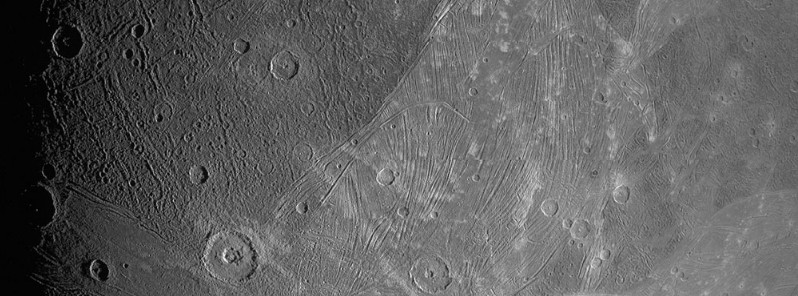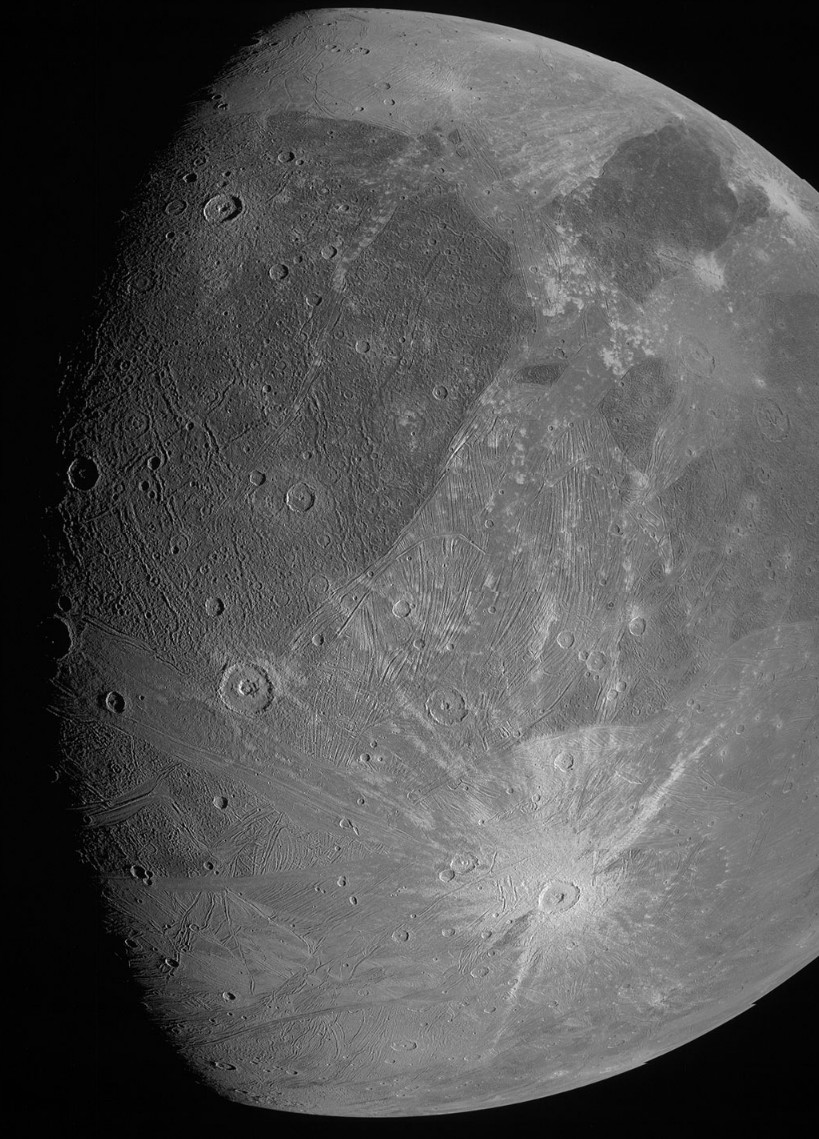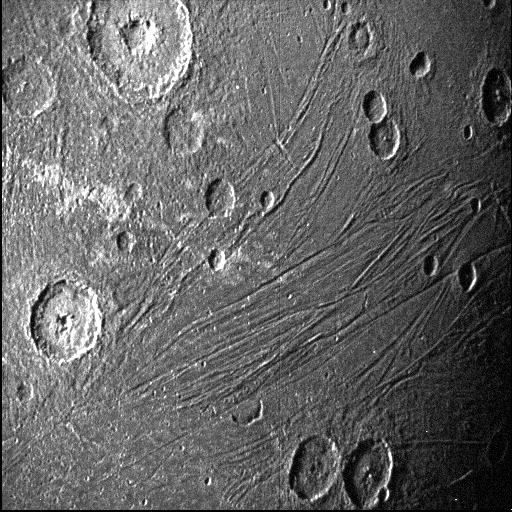First close-up images of Ganymede in more than 20 years

The first two images from Juno spacecraft's June 7, 2021, flyby of Jupiter’s giant moon Ganymede have been received on Earth. This was the closest any spacecraft has come to this moon in a generation.
The photos – one from the Jupiter orbiter’s JunoCam imager and the other from its Stellar Reference Unit star camera – show the surface in remarkable detail, including craters, clearly distinct dark and bright terrain, and long structural features possibly linked to tectonic faults.
The image below was obtained by the JunoCam imager. At the time of closest approach, Juno was within 1 038 km (645 miles) of its surface – closer to Jupiter’s largest moon than any other spacecraft has come in more than two decades.

This image is a preliminary product – Ganymede as seen through JunoCam’s green filter. Juno is a spin-stabilized spacecraft (with a rotation rate of 2 rpm), and the JunoCam imager has a fixed field of view. To obtain Ganymede images as Juno rotated, the camera acquired a strip at a time as the target passed through its field of view. These image strips were captured separately through the red, green, and blue filters. To generate the final image product, the strips must be stitched together and colors aligned.
At the time this preliminary image was generated, the “spice kernels” (navigation and other ancillary information providing precision observation geometry) necessary to properly map-project the imagery were not available. The red, and blue filtered image strips were also not available. When the final spice kernel data and images from the two filters are incorporated, the images seams (most prevalent on lower right of sphere) will disappear and a complete color image will be generated. Image credit: NASA/JPL-Caltech/SwRI/MSSS
Juno’s Stellar Reference Unit, a navigation camera that keeps the spacecraft on course, provided a black-and-white picture of Ganymede’s dark side (the side opposite the Sun) bathed in dim light scattered off Jupiter. Image resolution is between 600 to 900 m (0.37 to 0.56 miles) per pixel.

This image of the dark side of Ganymede was obtained by Juno’s Stellar Reference Unit navigation camera during its June 7, 2021, flyby of the moon. Credits: NASA/JPL-Caltech/SwRI
The spacecraft will send more images from its Ganymede flyby in the coming days, with JunoCam’s raw images being made available here.

Image credit: NASA/JPL-Caltech/SwRI/MSSS

Commenting rules and guidelines
We value the thoughts and opinions of our readers and welcome healthy discussions on our website. In order to maintain a respectful and positive community, we ask that all commenters follow these rules.